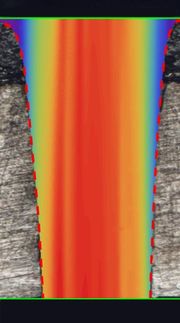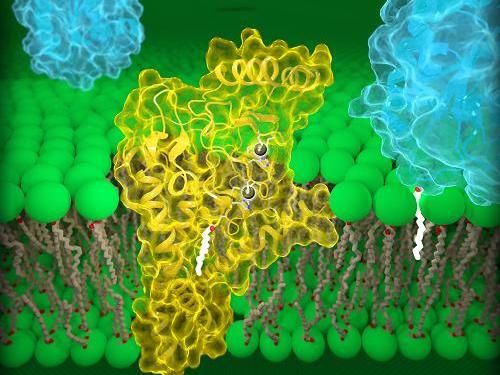Ultra-short X-ray pulses could shed new light on the fastest events in physics
If you've ever been captivated by slow-motion footage on a wildlife documentary, or you've shuddered when similar technology is used to replay highlights from a boxing match, you'll know how impressive advancements in ultra-fast science can be.
Researchers from the Department of Physics at Oxford University (with colleagues at the Rutherford Appleton Laboratory and the University of Strathclyde) have demonstrated, for the first time, that it is possible to generate ultra-short x-ray pulses using existing technology - and it could open up a huge range of scientific applications.
A new paper outlines how computer simulations of a technique called Raman amplification show that current short-duration x-ray flashes - lasting just a thousandth of a billionth of a second - could be compressed even further, down to a fraction of a femtosecond.
James Sadler, a second-year DPhil student and lead author of the paper, says: 'X-ray pulses from free electron lasers are being used in a whole host of ways, from biomedical technology and work on superconductors to research into proteins and states of matter in dense planets.
'We have shown, through our simulations, that it is possible to shorten the pulse length of x-rays by a factor of a hundred or a thousand - flashes of light shorter than the time it takes for a chemical reaction to take place. This could have exciting implications across a range of scientific disciplines.'
The simulations, using code written by Warren Mori at UCLA and Professor Luís Silva of the Instituto Superior Técnico in Lisbon, were carried out on the UK's SCARF and ARCHER supercomputers.
Professor Peter Norreys, Principal Investigator of the project, adds: 'A good analogy might be those natural history programmes on TV. When you see, for example, a bird in flight captured by an ultra-fast camera, you can see all the beautiful intricacies that can't be picked up by the naked eye or conventional technology.
'By reducing the pulse length of these x-rays by another order of magnitude - in effect, quickening the "shutter speed" - we can make a number of scientific processes much clearer.'
Those processes include some of the shortest events in physics, such as electrons moving in atoms. The key now, say the researchers, is to demonstrate the technique under laboratory conditions.
Original publication
Most read news
Original publication
James D. Sadler, Ricky Nathvani, Piotr Oleśkiewicz, Luke A. Ceurvorst, Naren Ratan, Muhammad F. Kasim, Raoul M. G. M. Trines, Robert Bingham & Peter A. Norreys; "Compression of X-ray Free Electron Laser Pulses to Attosecond Duration"; Scientific Reports; 2015
Organizations

Get the analytics and lab tech industry in your inbox
By submitting this form you agree that LUMITOS AG will send you the newsletter(s) selected above by email. Your data will not be passed on to third parties. Your data will be stored and processed in accordance with our data protection regulations. LUMITOS may contact you by email for the purpose of advertising or market and opinion surveys. You can revoke your consent at any time without giving reasons to LUMITOS AG, Ernst-Augustin-Str. 2, 12489 Berlin, Germany or by e-mail at revoke@lumitos.com with effect for the future. In addition, each email contains a link to unsubscribe from the corresponding newsletter.

























































